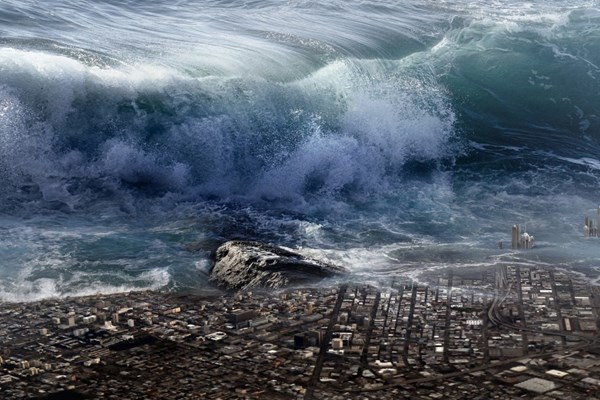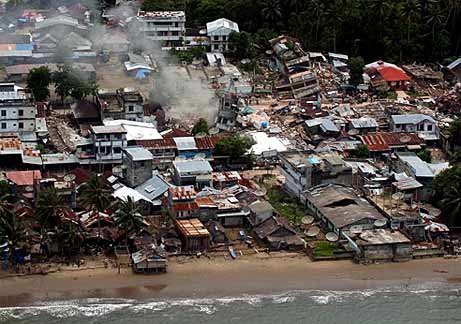**John Storm Has Left the Philippines’ Forecast Area, Heading Towards the North**

On the morning of August 19, Typhoon John (international name) left the forecast area of the Philippines and is now heading north. The latest forecast suggests that the storm, which is near the East Sea (South China Sea), is expected to affect the Batanes and Babuyan Islands of the Philippines. According to forecasts, the typhoon will move through the East China Sea towards the Korean Peninsula or the eastern coast of China. The Philippine Atmospheric, Geophysical, and Astronomical Services Administration (PAGASA) reported that as of 3:00 PM local time on August 19, the center of the tropical storm Zari (known as Dindo in the Philippines) was located at approximately 26.5°N latitude and 126°E longitude, with winds near the center at 70 km/h, gusting up to 90 km/h. Over the next 24 hours, the storm is expected to move northward at a speed of 25 km/h.

Earlier, according to the 10:00 AM storm bulletin on August 19 from PAGASA, Typhoon Zari had exited the monitoring area (PAR) of the Philippines, located about 670 km northeast of Itbayat, Batanes. At that time, the winds near the storm’s center were at 65 km/h, gusting up to 80 km/h, with an area of strong winds extending up to 320 km from the center. PAGASA’s weather forecast bulletin stated that Typhoon Zari is unlikely to directly affect the weather conditions in the Philippines.

Typhoon Chang Dari intensified from a low-pressure area detected within the Philippine monitoring area in the afternoon of August 18. By 5:00 AM on August 19, the low-pressure area had strengthened into a tropical storm, named Zari internationally. Although it is not expected to affect the weather in the Philippines, Typhoon Zari, combined with the southwest monsoon, is causing moderate sea conditions with waves between 1 and 2 meters high along the northern coastal waters of Luzon. Small boats are advised to take preventive measures when venturing out and to avoid traveling under these conditions, especially if the crew is inexperienced or poorly equipped.
In the next three days, Typhoon Zari is expected to move through the East China Sea and the Yellow Sea, heading towards the Korean Peninsula, likely maintaining its status as a tropical storm during this time. PAGASA advises residents, management agencies, and disaster risk reduction authorities to take all necessary measures to protect lives and property. People living in areas identified as prone to these hazards are advised to follow evacuation orders and other instructions from local authorities.
Related to the East Sea region, according to the latest weather forecast at 4:00 AM on August 20, a low-pressure area near the East Sea has been identified approximately 1,030 km northeast of Luzon, Philippines. The latest forecast from the Joint Typhoon Warning Center (JTWC) of the US Air Force and Navy indicates that this low-pressure area, known as Invest 99W, has little chance of intensifying into a typhoon within the next 24 hours. Currently, Invest 99W has sustained winds of about 30 km/h.
In the latest typhoon forecast, Taiwan’s Central Weather Bureau (CWA) reported that the storm near the East Sea, Typhoon Chang Dari, is unlikely to affect Taiwan. Typhoon Chang Dari is located in the waters east of Taiwan and Okinawa, Japan, before intensifying into the ninth tropical storm of the typhoon season in the Western Pacific. Forecasters from Taiwan’s Central Weather Bureau (CWA) said that Typhoon Zari is moving at a speed of 17 to 30 km/h towards the north-northwest, with sustained winds of 65 km/h and gusts of up to 90 km/h. According to the forecast, although Typhoon Zari is unlikely to directly affect Taiwan, its movement is expected to bring heavy rain to central and southern parts of the island as the southwest monsoon strengthens from August 20.
According to the latest typhoon news from the Korea Meteorological Administration (KMA), Typhoon Zari is expected to hit Korea, bringing heavy rain and storms. The Korea Meteorological Administration said that Typhoon Chang Dari is expected to bring rain to the Korean Peninsula until August 20. The storm near the East Sea is currently moving northwards towards western Korea. According to the latest forecast from the Korea Meteorological Administration, Typhoon Chang Dari is expected to dissipate early on August 21, about 60 km east of Seongnam, Chungcheongbuk-do. The storm currently has maximum sustained winds of 68 km/h and a wind radius of 240 km. The name “Chang Dari” is derived from the Korean language, meaning “lark,” and was chosen by North Korea’s weather agency. Due to the impact of Typhoon Chang Dari, several areas across Korea, including Changwon and Jeju Island, are expected to experience showers with thunderstorms and lightning.
According to the latest weather forecast, one of the two low-pressure areas near the East Sea has intensified into a typhoon and has been given the international name Zari. Specifically, the Philippine Atmospheric, Geophysical, and Astronomical Services Administration (PAGASA) reported that two low-pressure areas were detected on the afternoon of August 18, one of which was within the Philippine monitoring area near Batanes. As of 5:00 AM on August 19, the low-pressure area named Dindo had intensified into a tropical storm with maximum sustained winds of 65 km/h and gusts up to 80 km/h. The storm has been given the international name Zari, with its center located at approximately 24.9°N latitude and 126.1°E longitude as of 4:00 AM on August 19. The storm, known locally as Dindo, was located near the northern boundary of the Philippine monitoring area (PAR), about 640 km northeast of Itbayat, Batanes. The storm is moving northeast at a speed of 10 km/h.
PAGASA forecasts that Typhoon Zari will exit the Philippine monitoring area (PAR) within the next six hours from the time the information was released. Outside the Philippine monitoring area, the storm is expected to move through the East China Sea towards the Korean Peninsula or the eastern coast of China. The intensity of the storm is expected to be limited outside the Philippine monitoring area, with a potential weakening within 24 hours. On the evening of August 18, weather forecasting expert Veronica Torres mentioned that the low-pressure area within the Philippine monitoring area could intensify into a storm within the next 24 hours, and if so, it could also exit the area within that time frame. PAGASA is also monitoring a second low-pressure area that may enter the Philippine monitoring area on August 19. This low-pressure area is currently located east of Luzon, outside the Philippine monitoring area. PAGASA also stated that the low-pressure area may enter the Philippine monitoring area on August 19, exit on August 20, and re-enter the area on August 22, then remain in the northern Philippine Sea until Sunday, August 25. PAGASA also forecasts a high-pressure area forming north of the Philippine Sea from August 21 to August 23. Meanwhile, the southwest monsoon is expected to bring scattered rain and thunderstorms over Batanes and Babuyan Islands. Residents in the affected areas are warned of the potential for flash floods or landslides due to moderate to heavy rain.





